NVIDIA’s GeForce GTX 460: The $200 King
by Ryan Smith on July 11, 2010 11:54 PM EST- Posted in
- GPUs
- GeForce GTX 400
- GeForce GTX 460
- NVIDIA
Meet the GTX 460
A number of differennt GTX 460 cards will be launching today. For the purpose of this article we are focusing on the reference design as it will be the most common, but there are also a number of vendor-customized designs that will be launching alongside the reference cards. For a complete writeup of the vendor cards we've received from EVGA, Asus, and Zotac, please see Part 2 of our launch day coverage.
As we discussed previously, NVIDIA will be launching 2 GTX 460 cards today: the GTX 460 1GB, and the GTX 460 768MB. The cards are virtually identical, with the latter being a GTX 460 without the 7th and 8th GDDR5 memory chips and the ROP count being adjusted accordingly. Both are otherwise built on the same PCB with the same components and same cooler.
Starting with the PCB, NVIDIA has mounted a GF104 GPU on the center of an 8.25” PCB. This is a notable change from NVIDIA compared to the GTX 200 series, as the reference design for every card in that series used the same 10.5” PCB and cooling apparatus, even on the lower-end cards such as the GTX 260. On densely packed cases 10.5” could be an issue, somewhat limiting the number of cases a GTX 260 could go in to. However at only 8.25” long for the GTX 460, it’s short enough that just about any case that can accept a double-wide card can accept the GTX 460. Furthermore this makes it the shortest reference card at its price point, as the bulk of Radeon HD 5830s (which do not have a reference design) are over 8.5” long. Even the Radeon HD 5850 with its virtually identical TDP of 151W is over an inch longer.
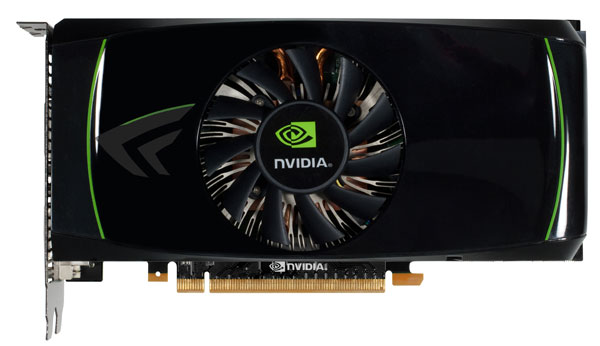
On our sample cards NVIDIA equipped the cards with 128MB 4GHz Samsung GDDR5 chips. With the cards’ memory only clocked at 3.6GHz effective this leave some room for overclocking, but as with GF100 the limit is NVIDIA’s memory controller rather than the chips. Any notable memory overclocks are just as likely to reduce performance due to error detection and retransmission as they are to improve performance.
Both the 1GB and 768MB GTX 460s require 2 6pin PCIe power plugs, which are mounted facing the rear of the card. As the ATX power limit for a card with 1 plug is 150W, this makes 2 plugs required on the 160W TDP 1GB card while on the 150W TDP 768MB card it’s both a holdover from the 1GB card and an insurance bet against the card drawing more power.
On the front of our reference cards is a port configuration identical to the reference GTX 480 and GTX 470: 2x DVI ports and a mini-HDMI port. NVIDIA went with this configuration as they believe that it’s more useful to have a mini-HDMI port than a mini-DP port due to HDMI-enabled monitors, and this hasn’t changed on the GTX 460. However like the GTX 480 and GTX 470, the GF104 GPU can only drive 2 of those 3 outputs at once.
The GTX 460 is 3DVision Surround capable just as the other GTX 400 series cards, but also like those cards this requires 2 cards in SLI to driver the requisite number of monitors. This launch effectively lowers the entry price for 3D Vision surround down from around $520 (2x GTX 465) to $400 (2x GTX 460). However we would not suggest using the feature with 768MB cards, as the extra 256MB of RAM helps a great deal at the higher resolutions created by 3DVision Surround.
Moving beyond the PCB, we have the GTX 460’s cooler. Not unlike GF104’s revised architecture, this too caught us a bit off-guard. NVIDIA has for the longest time used a blower configuration on their mid-range and higher cards, with a rear mounted blower fully exhausting hot air outside of the case. GTX 460 deviates from this in a major way, replacing the blower with a center-mounted fan. The fan sits atop a dual-heatpipe heatsink, with the heatpipes leading to raised fins on either side of the card. In turn these heatpipes are attached to a copper base which makes contact with the heatspreader capped GPU.
As a result of this design the GTX 460 is not fully exhausting, as a center fan will push air towards both ends of the card. The rear of the card is not sealed, but the card’s cover does have a plastic lip coming down roughly as far as the fan is tall. This in turn means the blades of the fan sit at the same height as the lip, blocking direct airflow out the back. With this design the card is still exhausting at least some air out of the rear of the card, but it shouldn’t be as much as a fully-open card such as our custom Asus GTX 460. Ultimately since this isn’t a fully exhausting design, it does mean that airflow within the case is a bigger issue, but we don’t believe it’s as important as it is for fully-open cards. On the positive side, this design is well suited for use with cases that have a fan behind the card (such as on our Thermaltake Spedo), as this allows a rear fan to blow fresh air directly in to the card.
One other quirk with this design is that the plastic cover for the card is not perfectly flat, but rather it’s slightly concave. We can only surmise that this is to give the card more room to draw in air in cramped situations, although in the case of our SLI setups the covered GTX 460 still ended up running much warmer. We should also note that this only applies for cards using the reference cooler – NVIDIA isn’t requiring partners to use the reference cooler, and a number of partners will be rolling out with custom coolers.
With a $199 MSRP and 150W TDP, the 768MB GTX 460 is also the first card to be of a suitable design for HTPC use. Although we don’t expect very many GTX 460s to be used for that (rather it would be for the unannounced GF106) NVIDIA is already putting plans in to motion for HTPC cards. The GTX 460 will offer full bitstreaming audio capabilities, something the GF100 GPU powering the other GTX 400 series cards could not do. This means that the GTX 460 will be able to bitstream DTS Master Audio and Dolby TrueHD along with the 8 channel LPCM audio capabilities supported by the previous GTX 400 series cards. This brings NVIDIA up to par with AMD, who has offered bitstreaming on the entire range of Radeon HD 5000 series cards.
Much like the launch of 3D Vision Surround however, this feature is late. It is not supported in the initial shipping drivers for the GTX 460 and will be made available at a later unknown date. We’ll be sure to test it along with the rest of the GTX 460’s HTPC capabilities once it’s available.
Finally, NVIDIA has been taking an interesting marketing angle with the GTX 460. In our briefings with NVIDIA, they have been heavily promoting the overclockability of these cards, and their partners have been hard at work binning cards to take advantage of this. As a result a number of cards being launched today will have some kind of factory overclock, and there should be further headroom for end-user overclocking. NVIDIA tells us that most – but not all – cards should be good for around 800MHz core. We’ll take a look at this in-depth in our overclocking section, but of the 6 cards we have, all of them surpassed this. This won’t be like the Radeon HD 5970 where a specific overclock is practically guaranteed, but if you can put up with a bit more heat and power consumption, the odds of 800MHz or more are looking very good.


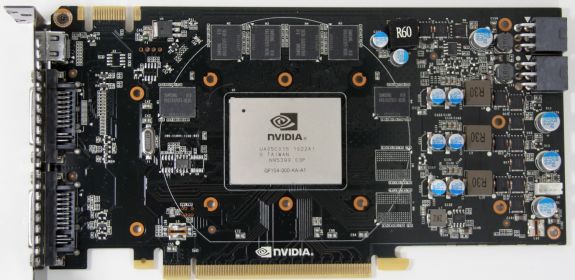
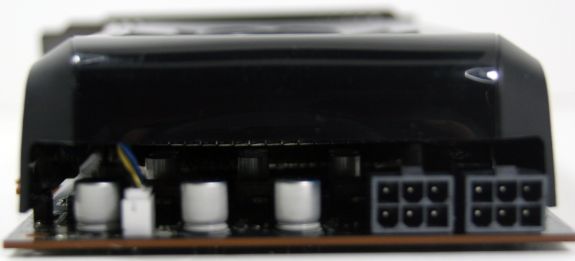
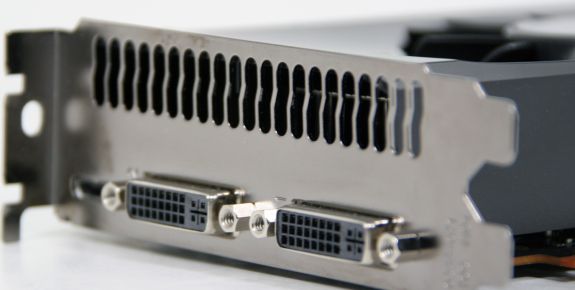
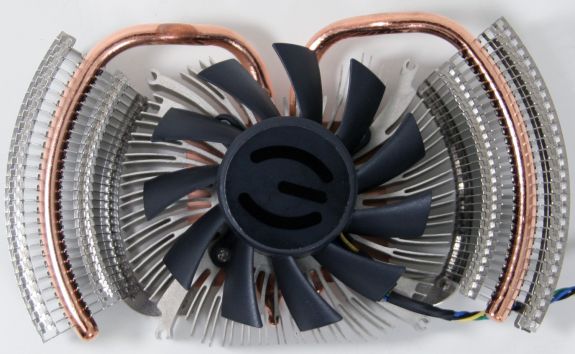
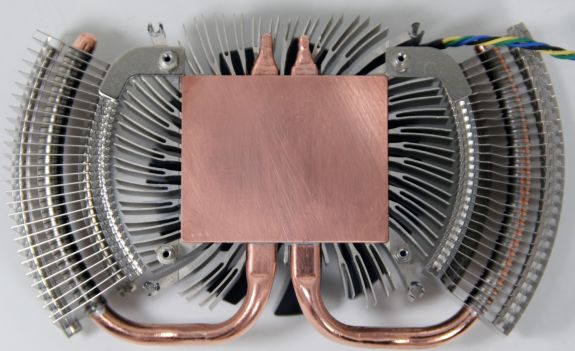









93 Comments
View All Comments
medi01 - Tuesday, July 13, 2010 - link
It was like that some day. But now I see more and more troubling signs. iPhone dissapearing from comparison photos ("oh, I've forgotten, it should have been in my pocket") when it has huge disadvantage, but always shown where it has advantage. (and happy readers crowd not "noticing" such "unimportant detail")AMD's 5830, the 200$ card with the same "it's slower than older... but it has some features" got serious beating right in the title. (guess what, it was actually cooler than older cards, so it had one advantage more than that of nVidia). On the other hand nVidia's 200$ card that is EXACTLY in the same positoin, got PRAISED in the title.
How on earth could that be called neutral?
ViRGE - Tuesday, July 13, 2010 - link
The 5830 launched at $240, not $200. In that respect the GTX 460 is not only launching at that cheaper price, but it's faster than the 5830 (and the 4890 the 5830 failed to beat).maxpain12 - Friday, September 17, 2010 - link
I agree with Lonyo, they are simply pointing out the technical aspects of the silicon. It gives those that follow the latest and greatest developments in chip architecture some food for thought. It was never intended to mislead a customer, the performance numbers are enough evidence to give the customer a decent understanding of what to expect in the real world application of the chip in consideration.Quidam67 - Saturday, July 17, 2010 - link
You're being a bit a of a fan-boy in my opinion. The article is very well balanced. Seriously, the 460 is the first good card from nVidia in a long time, and at a genuinely afordable price. ATI finally have some real competition on their hands. Up till now they have owned this generation. And the 5830 was always an odd fit for that market sector. Really, it was just an afterthought on how to repurpose 5870 rejects. It filled a hole, but now that hole doesn't exist anymore. It's the one ATI card from this generation that I really didn't like.Zendax - Saturday, July 31, 2010 - link
When the 5830 was released there was no current generation competition, so the only point of comparison was the past generation of cards.With the 465 the obvious points of comparison are the 5830 and 5850.
I'm not going to say, resolutely, that there's zero bias, but you're clearly LOOKING for an nVidia bias, and when you go about it that way, you're guaranteed to find it.
Goty - Monday, July 12, 2010 - link
... meh.It's a decent card, but it's still months too late.
notext - Monday, July 12, 2010 - link
I agree. It is good but AMD could easily drop the 5850 down to the 1gb prices and the advantage is gone. Hopefully they will.Quidam67 - Saturday, July 17, 2010 - link
That's what I hope will happen, because at the moment my next card is going to be a GTX 460 unless the 5850 price drops a littleDominionSeraph - Monday, July 12, 2010 - link
Not all of us scour rumor sites and wait with bated breath for months for the next big thing to come out. For some of us, waiting a few months is no big deal. (especially with the lack of any "must-have" gaming titles. The heyday of PC gaming is long over.)Since the launch-price 5850's (which didn't last long), the GTX 460 seems to be the first really good buy out there. The 5770 didn't outperform the 4870, the 5830 was an overpriced turd, the price-gouged 5850's and 5870's aren't good price/performance bargains, the GTX 470 and 480 are no better and are power hogs to boot.
THIS has me excited -- especially the SLI scaling. $400-$460 in cards that'll often beat a $700 5970? And they have low idle power consumption and decent load consumption (for the performance)? I mean in that price range is the 5870, GTX 480, and 4870 x2, and GTX 460 SLI beats them all. The 5870 has much lower load power consumption going for it but it's also significantly slower.
Unless you're going to need the power of 5870 in CF, the GTX 460 seems to be the way to go.
Rekdurexu - Monday, July 12, 2010 - link
"For everything but the high-end, this year is a feature yet and not a performance year."Is that "yet" supposed to be year?